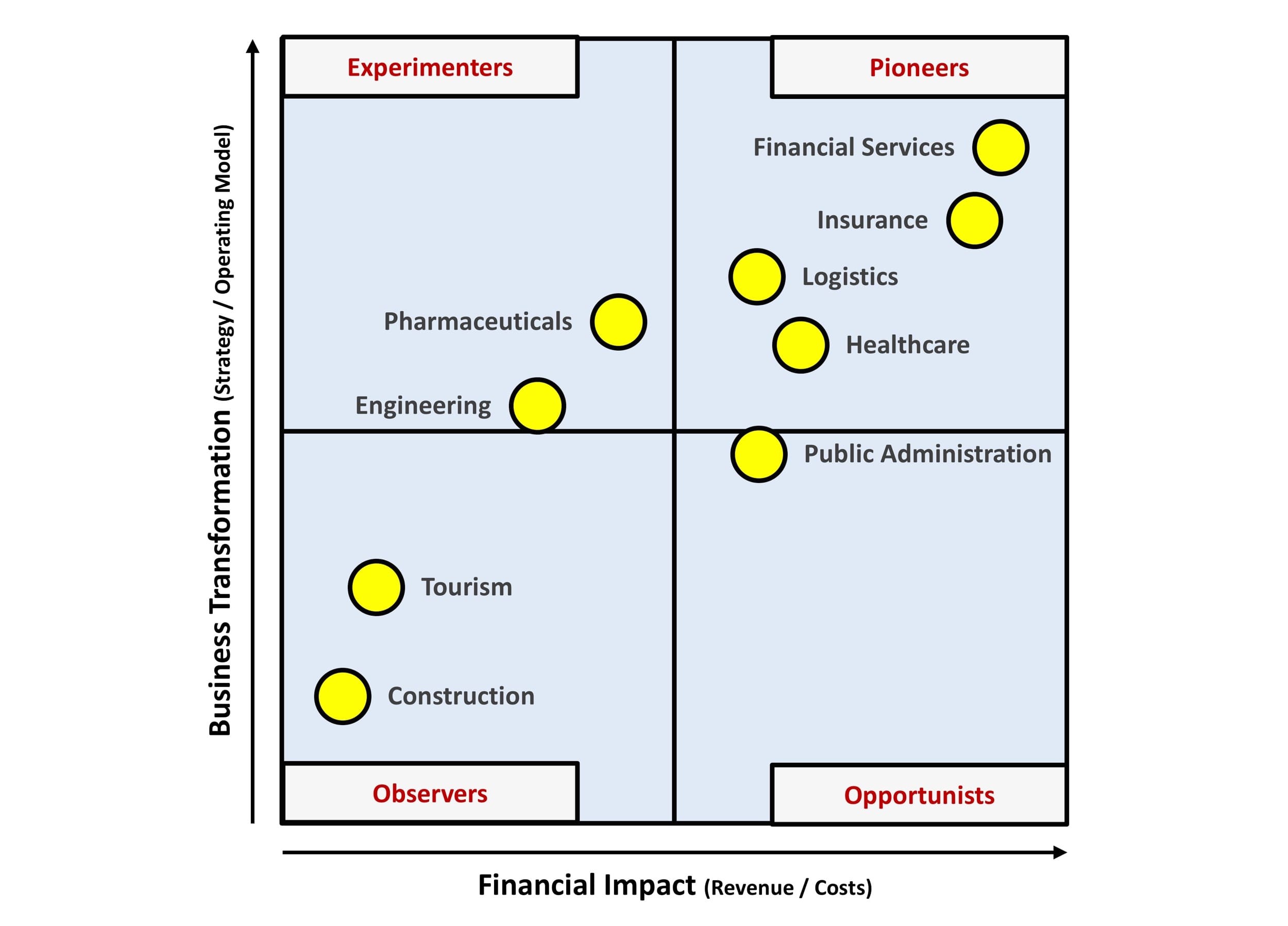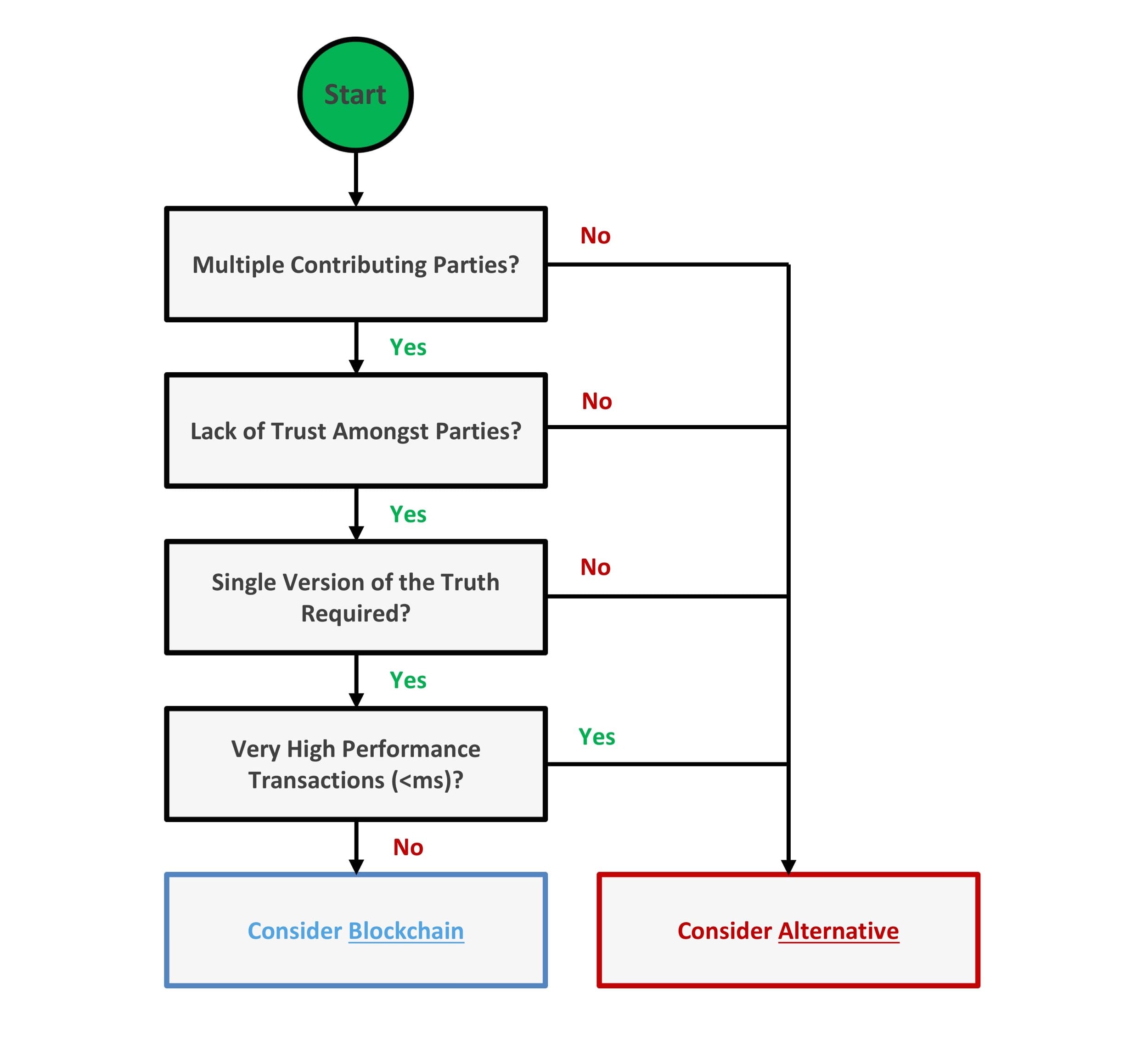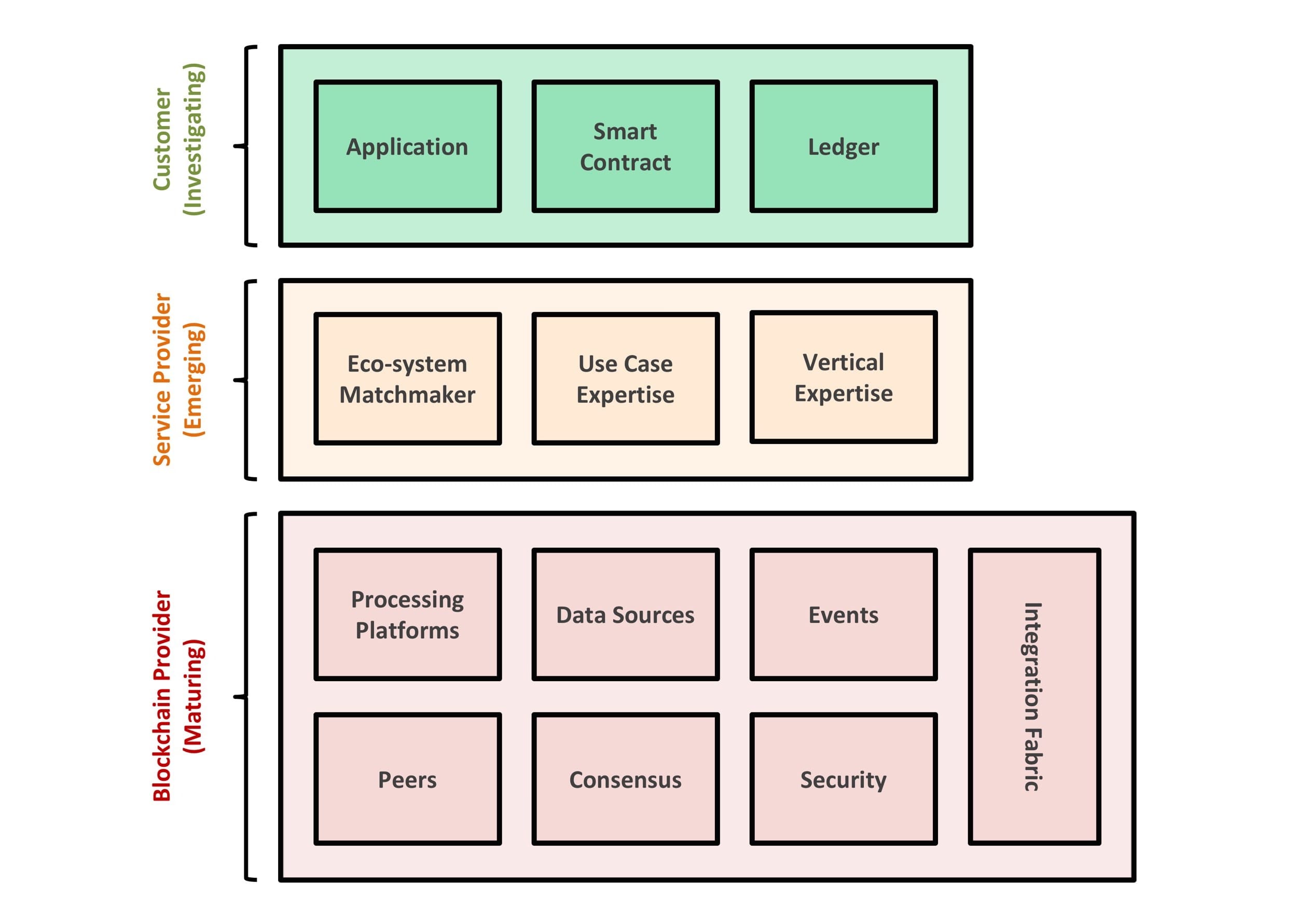Enterprise Blockchain - Part Two
In my previous article “Enterprise Blockchain - Part One”, I framed blockchain from an enterprise perspective, providing the foundation for a set of business recommendations.
Part one covered the topics outlined below, which I would recommend reading prior to this article.
- What is Blockchain
- Value Proposition
- Components of Enterprise Blockchain
- Barriers
- Key Players
This article (part two) will focus on the business recommendations.
Maturity
The value and impact of blockchain will vary depending on the industry. Unsurprisingly, blockchain presents the greatest opportunity (or threat) to financial services, resulting in many financial institutes pioneering the technology.
The chart below (compiled from multiple sources) provides a simple industry overview.

The value and/or impact of blockchain will likely be both direct and indirect. For example, financial services, insurance and logistics, will likely have an indirect impact on the pharmaceutical industry.
Use Cases
The most obvious use cases for blockchain are related to cryptocurrency and other financial services (global payments, etc.) However, as protocols such as Smart Contracts mature, other multi-party collaboration processes become viable.
The list below highlights a number of popular use cases being actively explored:
Financial Services
- Cryptocurrencies
- Initial Coin Offering
- Global Payments
- Asset Management
- Trade Finance
- Syndicated Loans
Insurance
- Claims Processing and Administration
- Reinsurance
- Fraud Detection
- Self-administered Insurance
- Telematics and Ratings
- Automated Underwriting
Pharmaceuticals / Healthcare
- Record Sharing
- Track, Trace and Purity
- Anti-Counterfeiting
- Personalised Medicine
- DNA Sequencing
- Compliance
Public Administration
- Voting
- Vehicle Registration
- Benefits and Licensing
- Identification
- Copyrights
Logistics
- Supply Chain
- Bill of Materials
- Asset Authentication
- Real-Time Auction for Supply Delivery
As highlighted by the breadth of the use cases, the potential impact of blockchain is profound, with broad political, social and economic implications.
Positioning
Although blockchain is an exciting and potentially transformative technology, it is not a silver bullet.
Though my research, I have seen many examples of poor Blockchain positioning, where the use case would be better supported by a traditional database and/or basic Merkle tree.
Outlined below is a simple process that aims to help identify viable blockchain use cases:

For example, using supply chain as the use case:
- Multiple Contributing Parties = Yes
- Lack of Trust Amongst Parties = Yes
- Single Version of Truth Required = Yes
- Very High-Performance Transactions = No
In this scenario, blockchain should be considered.
Actors
To help support the recommendations, situational awareness will be key, specifically understanding the actors involved in Blockchain.
Blockchain itself should be considered a commodity, with Blockchain Providers such as IBM (Hyperledger Fabric) and Ethereum providing the foundations (processing platform, consensus, etc.)
These foundations will naturally enable “higher order systems”, similar to what we have seen with cloud (specifically Amazon Web Services and Salesforce.com). For example, Veeva created a CRM built on Salesforce.com, which specifically targeted the life sciences vertical. Veeva now has a market capitalization of more than $8 billion.
As Blockchain continues to mature, I expect to see multiple Service Providers enter the market, targeting specific use cases and/or verticals (similar to Veeva). These Service Providers will not only provide technical expertise, but also look to act as a “matchmaker”, helping to coordinate and facilitate the multi-party collaboration (which I previously highlighted as a key barrier).
This approach will be valuable to enterprise businesses, who can then consume Blockchain “as a Service”, helping to avoid the significant upfront investments (time, resources and cost).
The diagram below outlines the key actors and their level of maturity.

Recommendations
In conclusion, I have outlined five recommendations for enterprise businesses looking to position blockchain.
NOTE: As outlined in part one, all recommendations will primarily target the Pharmaceutical Industry and Healthcare.
-
Place a strategic bet on Service Providers, who are anticipated to emerge over the next five years. Do not attempt to build Blockchain infrastructure or proactively coordinate / facilitate eco-system collaboration (unless the business has a strong and obvious influence over the eco-system).
-
Join a number of Blockchain consortiums, specifically Hyperledger ($75,000pa) and/or Enterprise Ethereum Alliance ($25,000pa), as well as engage in business specific consortiums. The goal will be to improve situational awareness, influence enterprise direction and ensure the business is ready to strike as the market matures.
-
Consider Blockchain a commodity, therefore focus IT engagement higher in the stack (e.g. Smart Contracts). Begin IT education on Smart Contracts and Decentralised Application (DApp) architecture. This approach will ensure IT has the foundational expertise to immediately maximise the value of blockchain-based services.
-
Complete a Proof of Value (Hyperledger or Ethereum) for educational purposes only. This would target a viable use case, leveraging the previously outlined positioning.
-
Communicate the Enterprise Blockchain positioning and ensure alignment across key IT and business stakeholders.